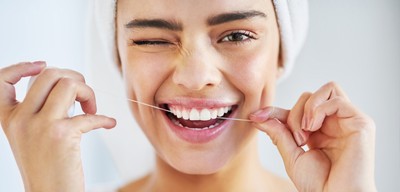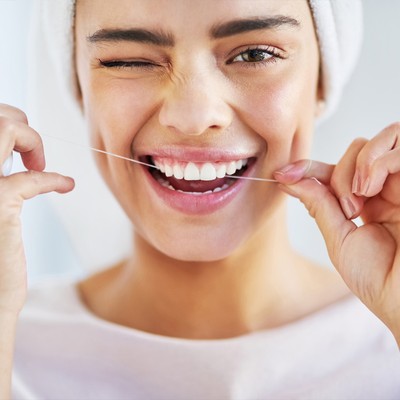

How To Get Perfect Teeth For Your Wedding
Planning
“Some treatments, like teeth straightening, can take up to a year, so you should start the process well ahead of time. Other services, like whitening, take two to three weeks, depending on how white you want to go. Bonding can only be started two weeks after whitening is finished, as the teeth need time to settle, so it’s worth doing some research into the various options and understanding what’s achievable in your own timeframe.” – Dr Rhona Eskander, cosmetic dentist & owner of Chelsea Dental Clinic
“To plan your smile makeover, I’d say you need to allow at least 12-18 months. The teeth may be moderately crowded, which would require time to align and straighten. This can be done with conventional fixed braces or Invisalign. If Invisalign is right for you, you need to allow a minimum of six months, although this does depend on the initial state of the teeth. Whitening would ideally be done one month before the wedding and topped up three or four days prior to the big day.” – Dr Krystyna Wilczynski, cosmetic dentist at White & Co. Dental
Straightening
“Fixed braces, which can go on the outside or the inside of the teeth, cost between £3,000 and £15,000 depending on the clinician, complexity of the case, and the experience of the dentist. Invisalign is another option if straightening is your main priority – this is a series of clear plastic trays (aligners) used to move the teeth. Each aligner is worn for 22 hours a day and only taken out to eat and drink. Fees usually start at £4,500 upwards and these ‘braces’ are less invasive and more discrete than other options. They can easily be removed before your wedding day if you’re not finished with the straightening, and the process simply resumed afterwards.” – Rhona
Cleaning
“Start with a deep clean with the hygienist, and see if they use a technology known as EMS – it involves a gentle stain removal and zero pain. Also, try to use non-abrasive stain-removing toothpastes. Lots of toothpastes that claim to clean and remove stains are too abrasive – they can permanently damage your teeth. For the best results, you need a certain level of peroxide, which can only be legally prescribed by a dentist. Ideally, clients would undergo a clean via EMS, then try home whitening or in-chair Zoom whitening, which takes about 90 minutes.” – Rhona

Veneers
“Many brides opt for veneers to give them perfect teeth. These are thin shells of ceramic, which are glued onto the teeth – it involves a smile-design process where the look is designed beforehand, bespoke to your face and mouth. Ceramic is long lasting, but it does involve some destruction to the existing tooth surface. That said, ceramic can be made very thin and requires minimal prep if the teeth are well aligned. If your teeth are crooked or the bite is wrong, orthodontics and various straightening methods should be considered first.” – Rhona
“In my opinion, porcelain veneers are a better long-term option because, if made beautifully and natural looking, they will retain their look for up to 20 years. It’s also much healthier for your gums (as long as it is properly placed and correct tooth reduction is done). Well-placed porcelain veneers, in a stable and gentle bite, can last a long time before needing to be replaced.” – Krystyna
Whitening
“There are many different options when it comes to teeth whitening. The best in terms of results and price is at-home whitening prepared by your dentist – a mouthguard is usually custom-made for you which you wear at night filled with a small amount of whitening gel. If you choose to have your teeth whitened at the dentist, your dentist will use ‘laser’ whitening, a surgical procedure that lightens the teeth using a photosensitive gel activated by light. This process usually takes around an hour. For those on a budget, there are now a plethora of teeth whitening strips available in the UK – the results won’t match a professional treatment, but they’re definitely an option.” – Dr Uchenna Okoye, resident cosmetic dentist at London Smiling
“While avoiding dark foods and drinks like chocolate, wine, coffee and red wine will help keep your teeth whiter, in reality it can be tricky to avoid them entirely. If you’ve had your teeth whitened, stock up on whitening toothpaste, which can maintain a brighter shade. Just don’t be lured by a whitening toothpaste as your sole form of whitening – they are fine to maintain, but most people won’t see a dramatic improvement from toothpaste alone. If you whitened your teeth with a tray system, wear yours for a couple of hours, or overnight, every month to remove surface stains before they embed into your enamel.” – Dr Greg Grillo, dentist at ExpressDentist.co
Cosmetic Bonding
“Bonding is a white filling or resin that’s placed on the teeth. It can be added to just the edges or the whole surface – the latter being known as composite veneers. Just be aware that bonding is much more prone to chipping and staining, and requires frequent repairs. If you don’t plan on whitening your teeth, the edge bonding should be matched to your existing colour. And if people wish to go whiter, they need to consider full coverage composite bonding or ceramic veneers. At our clinic, we try to mimic the perfect-imperfect smile: dentistry so good you won’t even know it’s there. In these cases, we create minor imperfections, so people don’t even realise they’re treated. Remember, people think bonding is reversible, but it’s not always. Edge bonding is pretty reversible in the sense that it’s easy to remove and maintain, but full coverage is like having acrylic put on your nails. Removal will require drills and some damage to the underlying surface.” – Rhona
“Bonding composite resins and their ability to mimic natural shiny tooth enamel have improved greatly over the last 10-15 years, and now these materials can, in some cases, look as good as porcelain veneers. They often don’t require much, or any, tooth reduction as the material is applied like a thick paint or putty and can be kept very thin. It doesn’t normally require a dental ceramic technician to construct either, and therefore saves both the patient and dentist time and money.” –Krystyna
Implants
“Implants are surgically placed restorations which replace a missing tooth. They are placed into the jawbone where they fuse with the surrounding tissue for a permanent tooth replacement. A false tooth (a crown) which matches the colour and shape of your existing teeth is then fitted to the top of the implant, leaving you with a fixed solution and a natural-looking smile.” – Krystyna
Maintenance
“Once you’ve achieved your perfect smile, make sure you see a dentist and hygienist regularly for maintenance. They will remove stains and polish up any restorations. Use a fluoride, non-abrasive, naturally whitening toothpaste in the meantime and floss daily and use TePe brushes or consider using an air flosser such as a Water Pik. Ideally, you want to remove plaque with an electric toothbrush such as the Philips Sonicare.” – Rhona
“While an electric toothbrush blows a manual toothbrush out of the water when it comes to brushing power, the leader here is most definitely the sonic toothbrush. An electric toothbrush can increase your number of brushstrokes to around 2,500 to 7,000 strokes per minute. A top sonic toothbrush, however, boasts around 30,000 brush strokes per minute. A decent electric or sonic toothbrush will have an in-built timer, ensuring you spend the right amount of time cleaning your teeth, and apply the right amount of pressure. When using a manual toothbrush, it can be far too easy to press too hard on your teeth and gums, which can lead to gum recession. If this is something you are concerned with, look for this feature.” – Dr Hannan Imran, senior dentist at Sensu
For more information visit WhiteAndCoDental.co.uk, ChelseaDentalClinic.co.uk, LondonSmiling.com, ExpressDentist.com & Sensu.
DISCLAIMER: We endeavour to always credit the correct original source of every image we use. If you think a credit may be incorrect, please contact us at info@sheerluxe.com.

